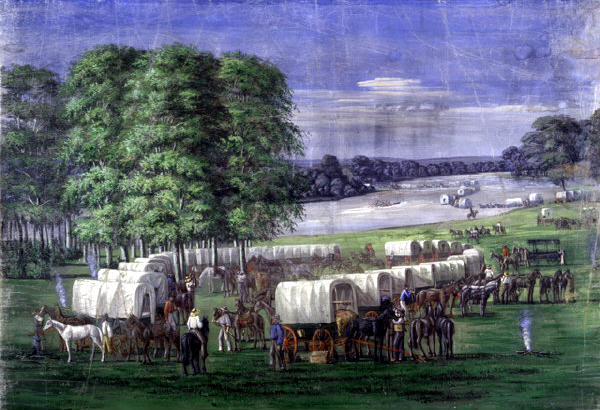When we think of genealogy and church history in The Church of Jesus Christ of Latter-day Saints, we often refer to those early members of the Church who crossed the plains of the North American continent fleeing from religious persecution. Those "pioneers" who crossed the plains to what is now Utah are technically people who arrived between 1847 when the first pioneers entered the Salt Lake Valley and 1868 when the railroad arrived in Utah. In the early days of the Church in Utah, virtually everyone was either a pioneer or the descendant of a pioneer.
Shortly after the arrival of the initial pioneer companies, Church Prophet and President, Brigham Young, began the process of sending "pioneers" out from the Salt Lake Valley to settle in other parts of the country including parts of Canada and Mexico. Quoting from the website, Utah History to Go and an article by Leonard J. Arrington from the Utah History Encyclopedia,
The establishment of settlements in Utah took place in four stages. The first stage, from 1847 to 1857, marked the founding of the north-south line of settlements along the Wasatch Front and Wasatch Plateau to the south, from Cache Valley on the Idaho border to Utah's Dixie on the Arizona border. In addition to the settlement of the Salt Lake and Weber valleys in 1847 and 1848, colonies were founded in Utah, Tooele, and Sanpete valleys in 1849; in Box Elder, Pahvant, Juab, and Parowan valleys in 1851; and in Cache Valley in 1856. Settlements in all of these "valleys," as early settlers called them, multiplied with additional immigration throughout the 1850s.
The first in this southward extending chain of settlements was Utah Valley, immediately south of Salt Lake Valley, which was settled by thirty families in the spring of 1849. Within a year the population had grown to 2,026 people, and the foundation had been laid for a settlement on each of the eight streams in the valley.After the arrival of the railroads in 1868, Utah began to attract many who were not members of the Church and eventually, due to expansion in other parts of the United States but Mormon settlements and others who moved for economic or other reasons, a majority of the members of the Church lived outside of the state of Utah. This occurred in the 1920s and 30s.
As the Church spread across the world and the membership continued to grow dramatically and on February 25, 1996, there were estimated to be more members of the Church living outside of the United States than there were members living in the United States. See "More Members Now outside U.S. Than in U.S."
Currently, there are millions and millions of members of the Church and a significant percentage of those members can trace their ancestry to the early members of the Church. For individuals who have ancestors who joined the Church, genealogical research is given a "leg up" because the FamilySearch.org Family Tree contains records drawn from the Church membership. If you have LDS ancestors, the first time you log into FamilySearch.org and open your part of the Family Tree, you will likely see a large number of entries and it may appear that your "genealogy is all done."
In some cases, members of the Church who sign on to FamilySearch.org and go to the Family Tree see no entries other than themselves. The reason for this is that other "living" people are not visible in the Family Tree and the new Family Tree user may have to enter some minimal information about their living parents and perhaps their living grandparents to connect to those dead people that are visible in the Family Tree. These entries for living people are essentially duplicates and have distinctive ID numbers. These entries are only visible to the person creating the entries until the person dies and a death date is entered or the person is marked deceased.
Over the time the Family Tree has been online, huge amounts of information have been added about all of the people who are or were members of the Church. However, there is a possibility that newer members of the Church, especially those who joined outside of the United States and came to Utah, may be lacking basic information. In these cases and other similar circumstances even when the members remained in the country where they joined the Church, it may be necessary to do some research into the Church's records.
A good beginning point is the Brigham Young University Library, Mormon Migration website. Even when the identity and history of those who joined the Church is known, questions often arise about particular dates such as those for baptism or marriage and it is necessary to do research into the Church records.
This series will identify and explain those Church records that are essential for genealogical research. Stay tuned.





No comments:
Post a Comment